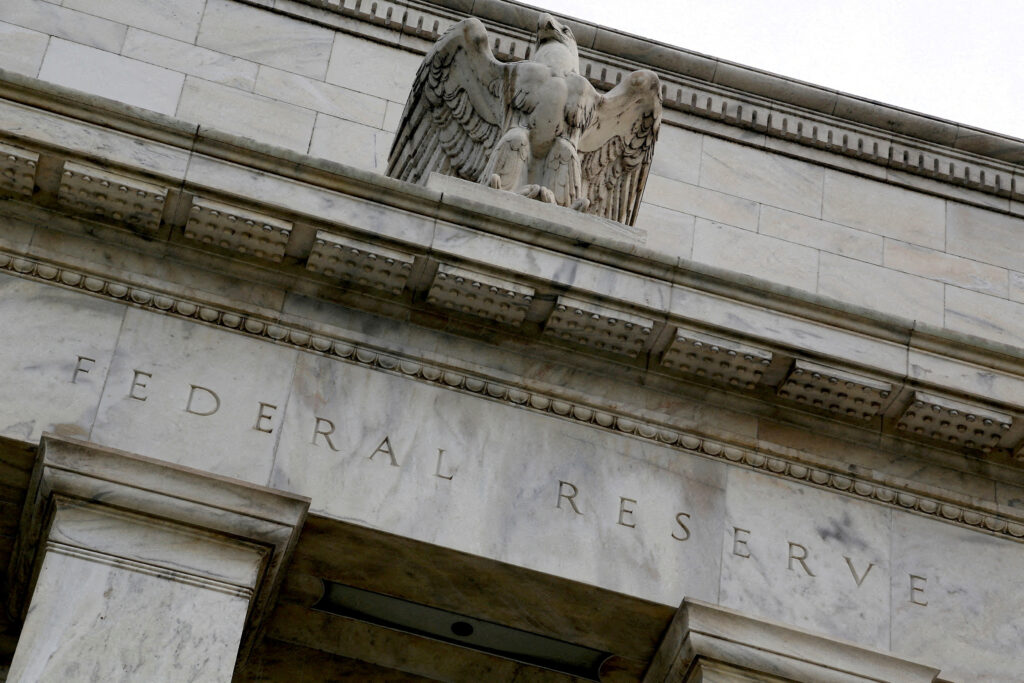US fintechs push into fixed-income trading as retail investor interest grows
By Hannah Lang
(Reuters) – U.S. financial technology companies that popularized amateur stock trading are pushing into fixed income in a bid to capitalize upon growing retail investor interest sparked by soaring yields in 2023.
Online brokerage Public, wealth management platform Wealthfront and fintech software company Apex Fintech Solutions are among the firms launching new products that aim to make it easier and more affordable for individual investors to gain exposure to fixed-income products like Treasuries and corporate bonds.
Market participants say there is little guarantee that bonds – long seen as a more staid part of the financial universe – will generate the same level of investor enthusiasm as stocks, whose wild swings in recent years minted a generation of online traders.
Nevertheless, the development is another example of how two-decade-high Federal Reserve interest rates are changing the investment landscape and sparking more retail interest in fixed-income products, which have historically been more cumbersome and expensive for amateur investors to trade.
Even as the Fed eyes rate cuts this year, fintechs believe they have an opportunity to transform retail bond investing with features the industry used to popularize stock trading, such as low-cost products, financial education tools, easy-to-use apps and fractionalized shares. Public and Apex are also offering fractionalized bond products, similar to the fractionalized stock shares offered by many online brokerages.
“When you try and do anything in the bond or fixed-income world … it looks and feels 25 years old. We just haven’t, as an industry, invested in that, and I think we are starting to see the fintech world catch up,” said Stephen Sikes, chief operating officer at Public.
The New York-based broker-dealer in December announced it would begin offering customers the ability to invest in $100 slices of Treasury and corporate bonds. It plans to add municipal bonds this year and eventually lower that minimum to $10. Sikes said Public’s Treasury account was its most successful product in 2023, as measured by investor flows.
Although retail investors have long been able to purchase Treasury bills directly from the Treasury Department or a retail brokerage, the process is cumbersome and often requires a minimum investment of anywhere from $1,000 to $10,000.
While bond-focused ETFs are readily available, experts note that some investors might prefer to purchase individual bonds in order to lock in yields and gain tax efficiencies.
Apex, which provides software to fintech companies, is also rolling out a new product that allows retail investors to buy portions of corporate bonds and treasuries. Trading platform Webull is among the clients exploring using the new feature, Apex said.
“Do I think it’s going to take over the equity side in terms of the velocity of people interacting? No, I don’t. But I do think this is just a natural next step,” said Bill Capuzzi, CEO of Apex.
‘THE CATALYST’
The benchmark 10-year Treasury note yield breached 5% in October for the first time since July 2007, making bonds more competitive with stocks.
Yields have retreated since then as investors bet the Fed will cut rates in 2024, but they are still elevated on a historical basis. For example, a six-month Treasury now yields around 5.25% – a far higher payout than the government-backed securities offered over much of the last decade-and-a-half.
“This is probably the catalyst that the market needed to finally improve” bond products, said Kevin McPartland, head of market structure and technology research at Coalition Greenwich.
Individuals buying Treasury bills through the Treasury Department’s TreasuryDirect site purchased $319.75 billion of the notes auctioned by the U.S. government from June 1 through Nov. 30, 2023, up from $144.96 billion during the same period in 2022, Treasury data shows.
“We’re pretty excited about fixed income,” said Wealthfront CEO David Fortunato. “It’s a huge hurdle to overcome to be able to invest in bonds in the recommended way using the tools that exist today.”

Wealthfront last year introduced automated portfolios that personalize a mix of bond ETFs to a customer’s individual tax situation.
Of course, many have historically viewed bonds as less exciting than stocks – though the goals of equity and fixed-income investors can differ. The total return for the S&P 500 since 2000 is about 412%. By contrast, the total return for the Morningstar US Core Bond TR USD index, which tracks U.S. dollar-denominated securities with maturities greater than one year, has been around 160% in that period.
“Even though bonds are more interesting now than they were in 2021, they still don’t move like stocks do,” said McPartland, of Coalition Greenwich.
Retail investors’ love for fixed income may also be tested if interest rates fall and yields become less attractive, said Robert Siegel, a venture investor and lecturer at the Stanford Graduate School of Business.
The Fed has penciled in three rate cuts for 2024, while investors are pricing in substantially more.
“As (fintech) platforms become more mainstream, they will need to adjust for various economic cycles to offer the product solutions that customers will want,” Siegel added.



